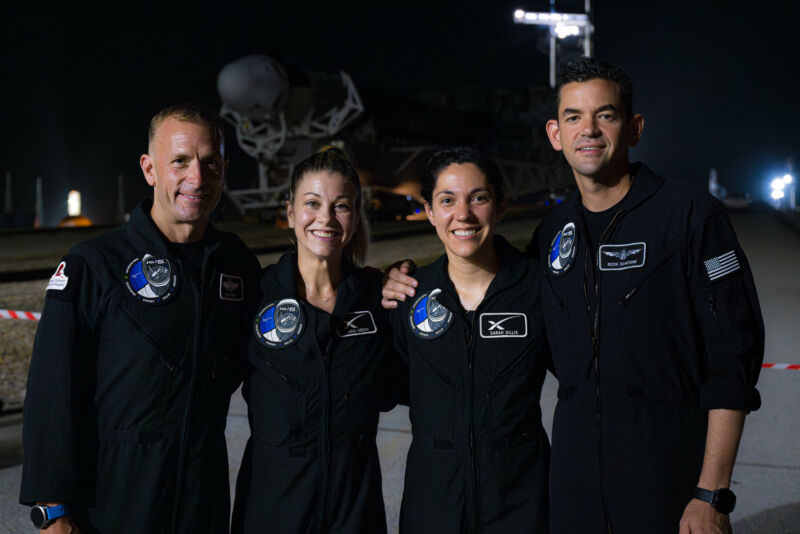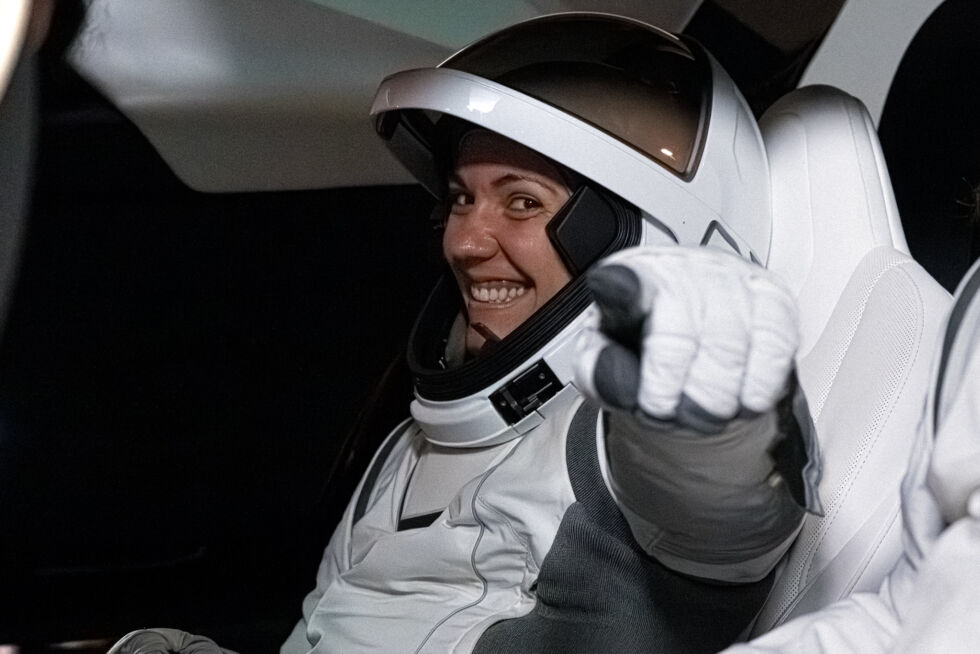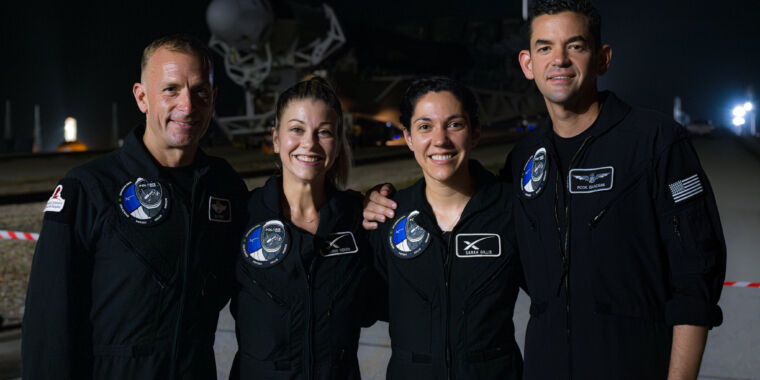
Polaris Program/John Kraus
SpaceX is set to launch the 14th crewed flight on its Dragon spacecraft early on Tuesday morning—and it’s an intriguing one.
This Polaris Dawn mission, helmed and funded by an entrepreneur and billionaire named Jared Isaacman, is scheduled to lift off at 3:38 am ET (07:38 UTC) on Tuesday from Launch Complex 39A at Kennedy Space Center in Florida.
This is just the second free-flying Crew Dragon mission that SpaceX has flown, and like the Inspiration4 mission that came before it, Polaris Dawn will once again field an entire crew of private astronauts. Although this is a private spaceflight, it really is not a space tourism mission. Rather, it seeks to push the ball of exploration forward. Isaacman has emerged as one of the most serious figures in commercial spaceflight in recent years, spending hundreds of millions of dollars to fly into space and push forward the boundaries of what private citizens can do in space.
The idea is to develop and test new technology and operations in furtherance of SpaceX’s bold vision to enable humankind to journey among the stars,” Isaacman said last week during a news conference ahead of Tuesday’s launch.
A novel step forward
Isaacman, chief executive of the Shift4 payments company, led the Inspiration4 mission in September 2021, which was unique because the crew consisted of himself—an experienced pilot—and three newcomers to spaceflight. Isaacman used the world’s first all-civilian spaceflight, on a private vehicle, to raise hundreds of millions of dollars for charity and expand the window of who could become an astronaut.
Yet whereas Inspiration4 felt like something of a novelty, Polaris Dawn is truly pushing the boundary of private spaceflight forward. Working closely with SpaceX, Isaacman has plotted a five-day flight that will accomplish a number of significant tasks after it launches.
During the initial hours of the spaceflight, the crew will seek to fly in a highly elliptical orbit, reaching an altitude as high as 1,400 km (870 miles) above the planet’s surface. This will be the highest Earth-orbit mission ever flown by humans and the farthest any person has flown from Earth since the Apollo Moon landings more than half a century ago. This will expose the crew to a not insignificant amount of radiation, and they will collect biological data to assess harms.
The Resilience spacecraft will then descend toward a more circular orbit about 700 km above the Earth’s surface. Assuming a launch on Tuesday, the crew will don four spacesuits on Friday and open the hatch to the vacuum of space. Then Isaacman, followed by mission specialist Sarah Gillis, will each briefly climb out of the spacecraft into space.
Isaacman’s interest in performing the first private spacewalk accelerated, by years, SpaceX’s development of these spacesuits. This really is just the first generation of the suit, and SpaceX is likely to continue iterating toward a spacesuit that has its own portable life support system (PLSS). This is the “backpack” on a traditional spacesuit that allows NASA astronauts to perform spacewalks untethered to the International Space Station.
The general idea is that, as the Starship vehicle makes the surface of the Moon and eventually Mars more accessible to more people, future generations of these lower-cost spacesuits will enable exploration and settlement. That journey, in some sense, begins with this mission’s brief spacewalks, with Isaacman and Gillis tethered to the Dragon vehicle for life support.

Polaris Program/John Kraus
Lasers and SpaceXers
Isaacman and his crew will also conduct a number of other research experiments, including trying to better understand a recently detected but major concern of space habitation, spaceflight-associated neuro-ocular syndrome. This will also be the first crewed mission to test Starlink-based laser communications in space.
Then, there is the crew. Isaacman’s close friend, retired US Air Force Col. Scott “Kidd” Poteet, will be the mission’s pilot, with Gillis and Anna Menon serving as mission specialists. Both Gillis and Menon are SpaceX engineers who worked with Isaacman during Inspiration4. Now, they’ll become the first SpaceX employees to ever go into orbit, bringing their experiences back to share with their colleagues.
This is the first of three “Polaris” missions that Isaacman is scheduled to fly with SpaceX. The plan for the second Polaris mission, also to fly on a Dragon spacecraft, has yet to be determined. But it may well employ a second-generation spacesuit based on learnings from this spaceflight. The third flight, unlikely to occur before at least 2030, will be an orbital launch aboard the company’s Starship vehicle—making Isaacman and his crew the first to fly on that rocket.

